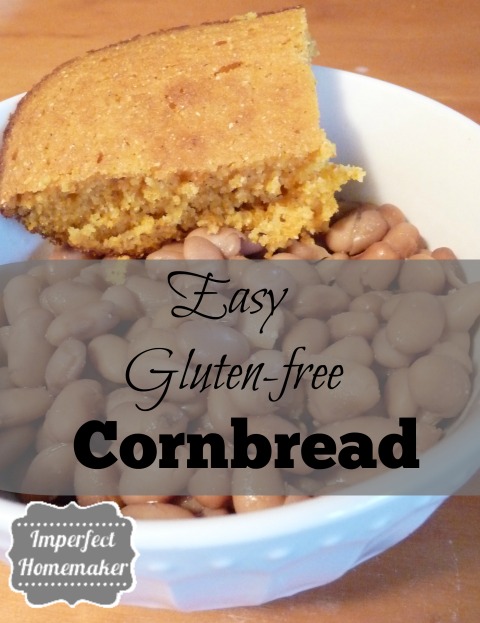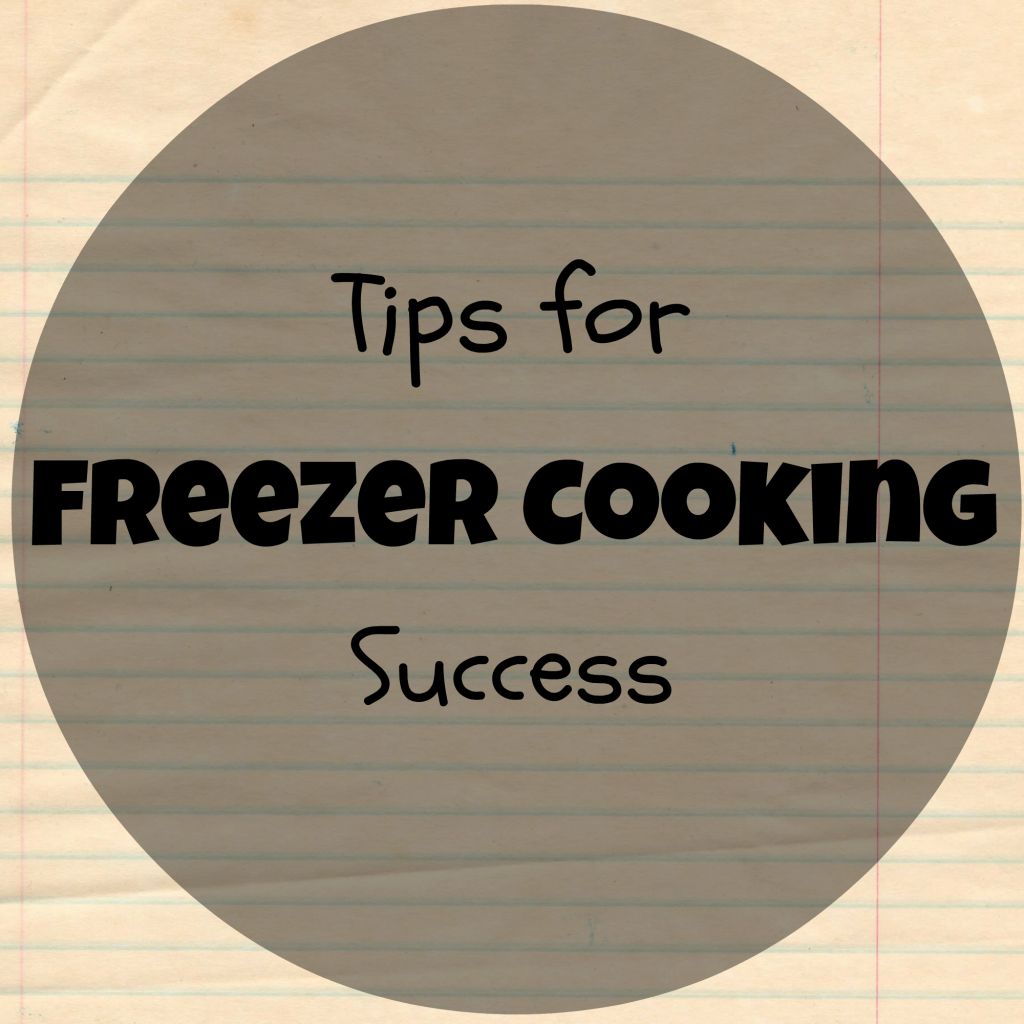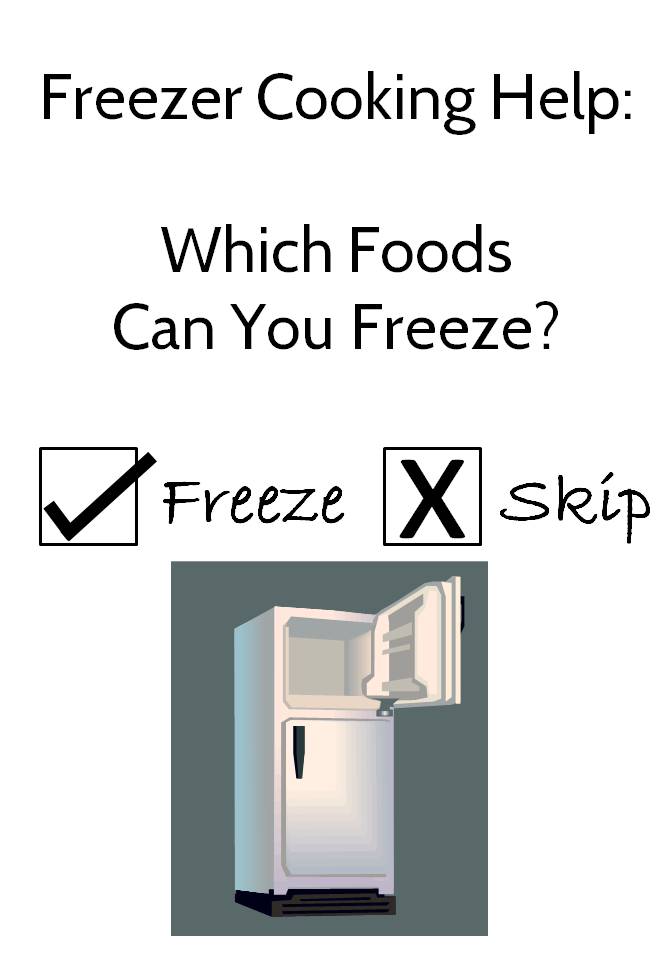Easy Gluten-free Cornbread
(Have you noticed that most of my recipes have the word “easy” in them?)
My family really likes pinto beans and cornbread, but we have not had it in a very long time – pretty much since we decided that eating non-GMO foods was one of the biggest areas in which we would not compromise. Non-GMO cornmeal is hard to find and expensive.
Last night I realized, “Hello! I have a WonderMill now! I can grind my own cornmeal!” (Thank you, WonderMill company. You are my hero.)
I had purchased a humongous bag of Non-GMO popcorn to go with the popcorn popper we got as a family Christmas present.
Lots of cornbread recipes have wheat flour in them besides cornmeal, but I am still trying to stay off wheat as much as possible. I tweaked a recipe I found online to be gluten-free, and (of course) easy to make.
Head over the Grain Mill Wagon to get the full recipe.
Freezer Cooking Guide: Tips for Success
Now that you know why you should be freezer cooking, and you know which foods do and don't freeze well, I want to share some tips to make your freezer cooking a success!
1. Be Prepared
It's important to get prepared for your cooking session if you're going to cook several freezer meals at once. Even if you are just doubling your nightly meal to put into the freezer, you'll need to get everything prepared, and make sure you have all the ingredients and storage containers.
2. Get Comfortable
You should wear a good pair of shoes (I have these shoes and absolutely love them! They're the most comfortable pair of shoes I've ever purchased!) If you can invest in a comfortable standing mat for your kitchen floor that is great too. Have a snack before you start to avoid snacking as you cook.
3. Shop with a List
You definitely do not want to shop for a freezer cooking session without a list. Go through all your recipes and write down all the ingredients as well as the amounts you need, taking into account the fact that you may be doubling, tripling, or even quadrupling some of your recipes. You need to know exactly how much and what to buy so that you will not be lacking anything when you get into the middle of cooking.
4. Cook What You Like
Most families actually rotate the same 8 to 10 dishes, and rarely try anything new. It's important to understand what you and your family like and work within that parameter to truly be successful with freezer cooking. Try only one or two new things in any give month and you'll be a lot happier with the outcome. Believe me, I've put some recipes in the freezer that were new to me, and ended up not liking them at all. Not fun to have to throw it out or eat something you don't like!
5. Get Organized
Before you start, make sure you begin with a clean kitchen and an organized workspace. Get out the pans and supplies that you need in advance and set them out like you work in a factory so that they're ready to go. Fill your sink with soapy water so you can wash dishes as you go. You'll need to reuse some of your utensils for other recipes and you'll be glad to have them clean and ready to go again. Plus, you don't want to end your cooking session with an avalanche of dishes to wash!
6. Packaging & Labeling
You can use freezer bags to store a lot of your meals. Lay them flat and you will find that you can fit quite of bit of food in the freezer that way. You also need to make sure you label everything so you'll know what it is after it freezes.
7. Handling Food Safely
Do not mix utensils when handling raw meat. Wash your hands often in hot soapy water. Use a thermometer to ensure proper internal cooking temperatures. Don't leave foods sitting out on the counter; get them back into the fridge or into the freezer. You can read more about the Core Four Practices of safe food handling at fightbac.org.
Are you ready to get some meals in the freezer?
Freezer Cooking Guide: Which Foods Can You Freeze?
Last Friday I posted 4 Reasons You Should Be Freezer Cooking.
Today I want to talk a little bit about what you can and cannot freeze. If you know these things, you can easily turn many of your favorite recipes into freezer recipes. No need to try to find a bunch of recipes that are specifically labeled “Freezer Recipes”.
Do Not Freeze These Items: (or freeze with caution)
Apples
Basil
Celery
Cheese
Chives
Cottage Cheese
Cream Cheese
Crumb Toppings
Cucumbers
Custard
Dairy (milk, sour cream, cream cheese, yogurt)
Fried Food
Frosting
Grapefruit
Grapes
Lemons
Lettuce and leafy greens
Limes
Mayonnaise
Onions
Oranges
Parsley
Pasta
Peppers
Potatoes
Radishes
Rice
Salad Dressing
Salad Greens
Sauces
Sour Cream
Sprouts
Watermelon
Some of the above items can be frozen if you know what you're doing and understand what changes freezing will make to them.
Cheese — You can actually freeze cheese as long as you understand the texture will change. It will be crumbly, (shred it first) and you can't eat it as is, but you can use it in a casserole as a topping. So, if you put cheese on top of a casserole that you're going to pop into the oven to reheat anyway it's fine. But if you plan to slice it for a sandwich, you probably don’t want to freeze your cheese.
Dairy — Freezing dairy will change its consistency; however, you can add it to soups and casseroles without any noticeable difference – especially if you reheat them slowly.
Fried Food — You can freeze fried food as long as you wrap it right, and then reheat it correctly. For something like fried chicken be sure to cool it down while draining off the extra fat, then wrap with freezer paper and then put it inside an air tight container. To reheat, put in the oven frozen after unwrapping on a greased pan.
Grapes — You can freeze grapes if you plan to eat them frozen. If you try to thaw them they will turn to mush.
Leafy Greens — You can chop and freeze leafy greens if you plan to use them in soups or stews.
Onions & Peppers — You can chop these and freeze them to use in recipes. Chop and let them dry on a paper towel first to drain off extra moisture. Spread them on a cookie sheet and freeze for about an hour before putting them into airtight freezer bags.
Tomatoes — You can chop them and freeze into serving sizes or recipe sizes in airtight containers. You can only use them for sauces after freezing or in a soup or stew where texture isn't as important.
Oranges & Citrus — You cannot freeze the fruit but you can freeze the zest. Zest onto a paper towel, and let dry out a bit, then freeze in one layer on a pan for about an hour. Pour into a airtight container to use in recipes.
Rice &Potatoes — They freeze fine in casseroles and dishes, but it does change their texture a bit. You cannot freeze them raw; you must precook and then freeze.
Pasta – While many places have pasta on the ‘no freeze’ list, you can freeze cooked or frozen pasta. It is recommended that you freeze pasta for some dishes uncooked because it will cook during the reheating and you don't want to overcook it. But, you need to use prepared dried pasta and not freshly made pasta that isn't dried.
Below is a list of foods that generally freeze without any problems:
Baked Goods (freeze already baked or freeze the dough)
Baking supplies (nuts, chocolate, coconut, flour, etc.)
Broth
Fruits (any besides citrus)
Fresh Herbs (freeze in ice cube trays with a small amount of water)
Meat
Sauces
Soups
Vegetables
Now that you know what does and doesn't freeze well, you can easily determine which of your favorite meals you can prepare for the freezer. Next time you make your favorite recipe, double it and put the extra in the freezer for a busy night! You won't even be tempted to pick up a pizza knowing that you've got healthy food already prepared!
What is the first meal you'll prepare for the freezer?
Gluten Free Pancakes
Sometimes running out of your normal ingredients provides the opportunity to create new recipes. That's what happened the other night when I came up with these gluten free and protein-packed pancakes.
I've posted the recipe for these gluten free pancakes over at the Grain Mill Wagon.
What You Need to Know about Oral Health
This is a sponsored post written by me on behalf of Waterpik.
If you've been reading here for any length of time, you know that I am interested in healthy living. I am always reading, and always trying to learn how to help myself and my family be more healthy.
This is the only body I'll ever have, so I'd better take good care of it. (Click here to tweet this!)
Some of the most recent reading I've been doing is on the topic of oral health. Up until now I have been focusing mainly on diet, sleep, and stress management to strengthen my health. I know I need to exercise more, and I am slowly working on that and getting better little by little.
But a topic that I have not paid much attention to is my oral health.
(If you can't read the infographic, you can click to enlarge.)
I could spend quite a while writing about how oral health affects the health of the entire body, but I'll try to condense it way down into a nutshell version.
When your gums become infested with bacteria due to improper brushing, poor diet, and failure to floss, the bacteria can then move into the bloodstream. These bacteria destroy tissue and white blood cells, dump toxins into the bloodstream, and create inflammation as the body tries to resist. However, this chronic inflammation sets the stage for much worse disease such as heart disease and cancer.
Now, I don't believe that oral health is the only thing that causes disease, but since it can play such a big part I think it's important that it be addressed!
How do you know if you have gum disease?
- Your gums are swollen, puffy, or tender
- Your gums bleed when you brush or floss
- You have receding gums
- Your gums are separating from your teeth, creating pockets
- You have constant bad breath or a bad taste in your mouth
How can you take care of your teeth and gums?
Brush and floss regularly to remove the bacteria from your teeth and gums.
I'll be honest. I have always hated to floss. And sadly, I have not taken very good care of my gums.
My gums are sensitive, and they bleed when I floss.
When I was asked if I wanted to try out a Waterpik Aquarius Professional Water Flosser, I was more than happy to do so. I know I need to take better care of my gums, and I wanted to see if using the Waterpik would be easier than flossing.
The Waterpik Aquarius Professional Water Flosser is clinically proven to improve gum health vs. string floss.
I liked that it didn't hurt my gums or make them bleed like floss does.
It has 7 different tips that you can use based on your personal needs, and you can set it to a higher or lower setting depending on what is comfortable for you.
It also switches between “floss” mode, where the water pulsates, and “massage” mode, to help stimulate circulation.
The switch is right on the handle, making it easy to turn on and off.
So far I have been happy with flossing this way, and I think it's great that the Waterpik gets down underneath the gumline where traditional brushing and flossing cannot reach.
Waterpik is offering free shipping on any product through March 31st with the coupon code FREESHIPWP660.
The Waterpik Aquarius Professional Water Flosser comes with a money-back guarantee as well as a 3 year warranty.
How is your oral health? Do you need to work on keeping those bacteria at bay so they cannot move on to other parts of your body? Do you think a Waterpik would make it easier for you to floss regularly?
This is a sponsored post written by me on behalf of Waterpik.
Savory Roasted Vegetables
This is a Sponsored post written by me on behalf of Gro-ables. All opinions are 100% mine.
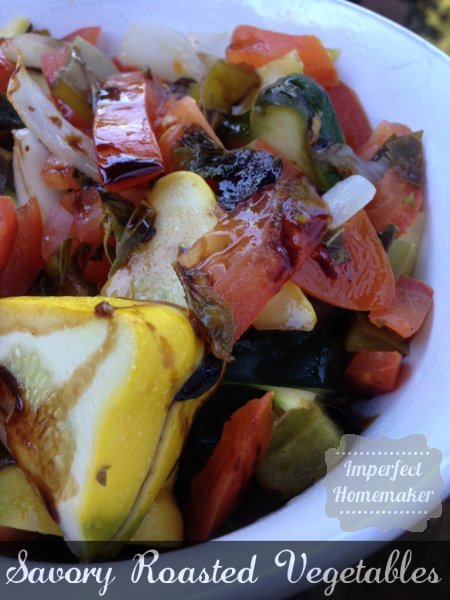
I am looking forward to spring so much! We are hoping to plant a few vegetables this year, and I cannot wait to have fresh food on hand to prepare dishes such as these savory roasted vegetables.
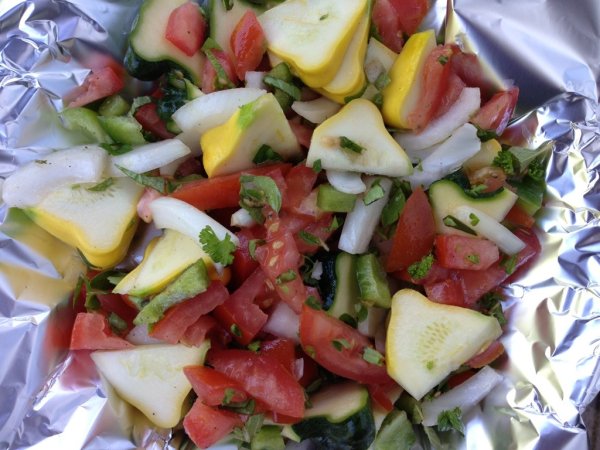
Preheat your oven to 350 F. Then chop up some veggies and herbs and toss them in some olive oil. Squash, peppers, onions and tomatoes are a good combination. Add some fresh herbs like basil, parsley and oregano.
Mix all your ingredients and wrap everything in foil on a baking dish. Bake at 350 F for about 40 minutes or so. Drizzle with your favorite balsamic reduction and serve over rice, quinoa or just have it by itself.
Do you want to have your own fresh veggies growing right in your backyard? Gro-ables seed pods are a great option for beginning gardeners or those with a brown thumb!
Gro-ables is a new product from Miracle-Gro that is designed for people new to gardening. When used as directed, they are guaranteed to grow! And they are super-affordable at $1.29 – $1.49 per pod.
Each pod contains all you need to grow your own food:
- Specially selected non-GMO seed at just the right depth
- Growing materials to protect the seed and keep it moist
- Plant food to help it grow and build strong roots
There are 17 different varieties of vegetables and herbs that you can grow and use to create delicious recipes like the one above.
And if you are really bad about remembering to water your plants like I am, Gro-ables also work together with the Sprout It app. Just enter the date you planted it in your app, and you will receive reminders to water your plant as well as other helpful tips.
What fresh vegetable or herb are you most looking forward to growing?

